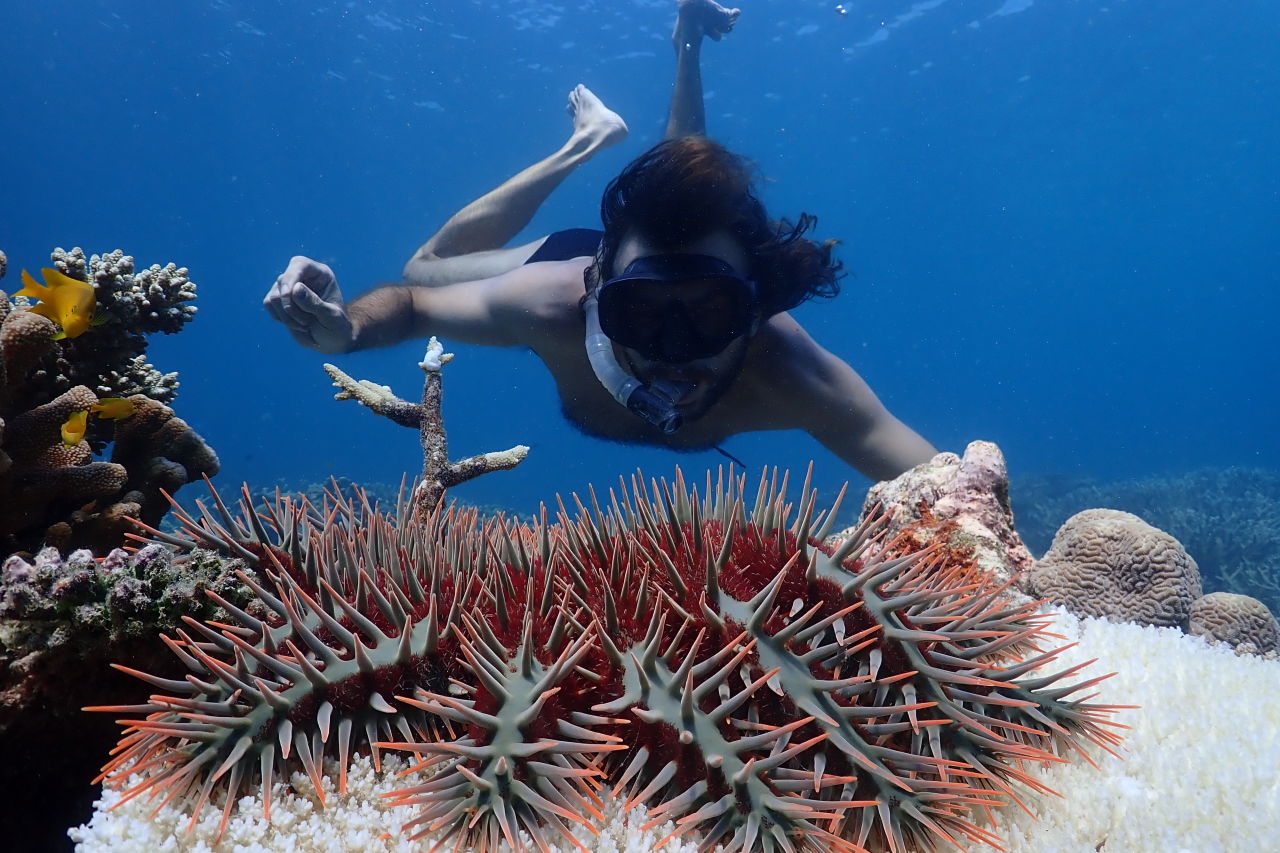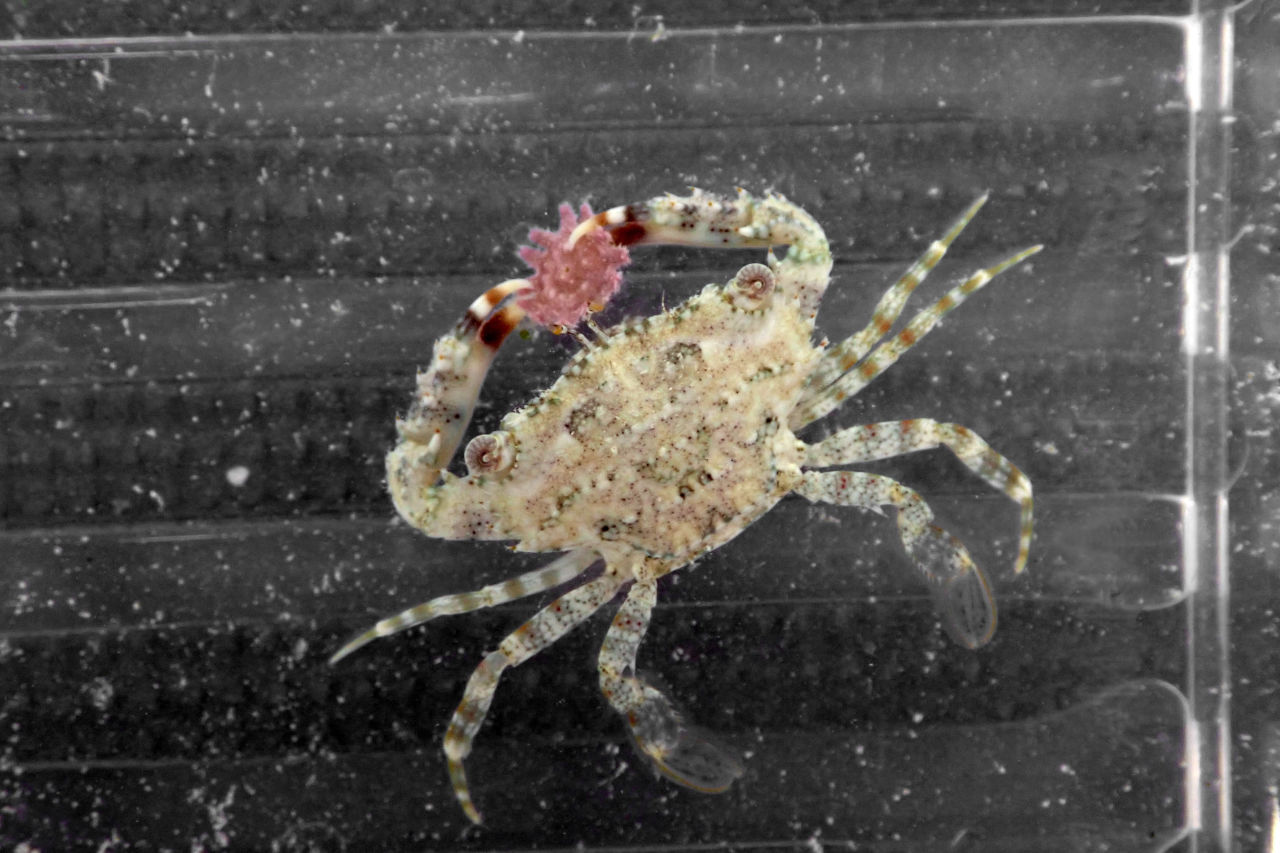The Great Barrier Reef is full of surprises—even for the scientists who study it every day. Recently, some unlikely potential heroes have emerged that could help fight against one of its most damaging threats.
For decades, the crown-of-thorns starfish has been known as a major contributor to coral loss, especially during outbreaks when its numbers skyrocket. These starfish feed on coral, and when left unchecked, can devastate large sections of the Reef. But recent research through our COTS Control Innovation Program has uncovered a surprising new group of predators that could help tip the balance back in favour of the coral—small, decapod crabs.
In a controlled lab study, researchers from The University of Queensland and the Australian Institute of Marine Science (AIMS) found that these crabs will eat juvenile crown-of-thorns starfish.

Lead researcher Dr. Kenneth Wolfe with an adult crown-of-thorns starfish on the Great Barrier Reef preying on coral
To confirm these findings in the wild, researchers used newly developed environmental DNA (eDNA) technology to detect crown-of-thorns starfish DNA inside the stomachs of seven species of crabs collected from reefs separated by more than 1000 kms along the Great Barrier Reef. The presence of crown-of-thorns starfish DNA and the discovery that areas with higher crab numbers saw fewer juvenile starfish provided breakthrough evidence that these crustaceans may be playing a natural, previously overlooked role in keeping starfish outbreaks in check.
In fact, the researchers estimated that these crabs may consume more than five juvenile starfish per day- a stark contrast to other known predators like the giant triton snail and some reef fish, which only consume one adult starfish every few days or weeks. The difference in scale is significant—particularly when trying to control starfish numbers at early life stages before they reach coral-destroying size.

A decapod crabs predating on juvenile crown-of-thorns starfish as part of the research. Credit Dr. Kenneth Wolfe University of Queensland
It's an exciting reminder of the complex and often hidden relationships that exist on the Reef. Every organism, no matter how small, can have a powerful role to play in maintaining its delicate balance. By better understanding these ecological connections, scientists are opening new possibilities for more natural, scalable approaches to Reef conservation.

Juvenile crown-of-thorn starfish. Credit: Florita Flores, Australian Institute of Marine Science
The study was led by researchers from the University of Queensland in collaboration with AIMS. It is part of our Crown-of-thorns starfish Control Innovation Program which is funded by the partnership between the Australian Government's Reef Trust and the Great Barrier Reef Foundation and supports new research to protect coral cover and reduce the frequency and severity of outbreaks.
Top image: Decorator crab preying on juvenile crown-of-thorns starfish as part of the research. Credit Dr. Kenneth Wolfe University of Queensland






